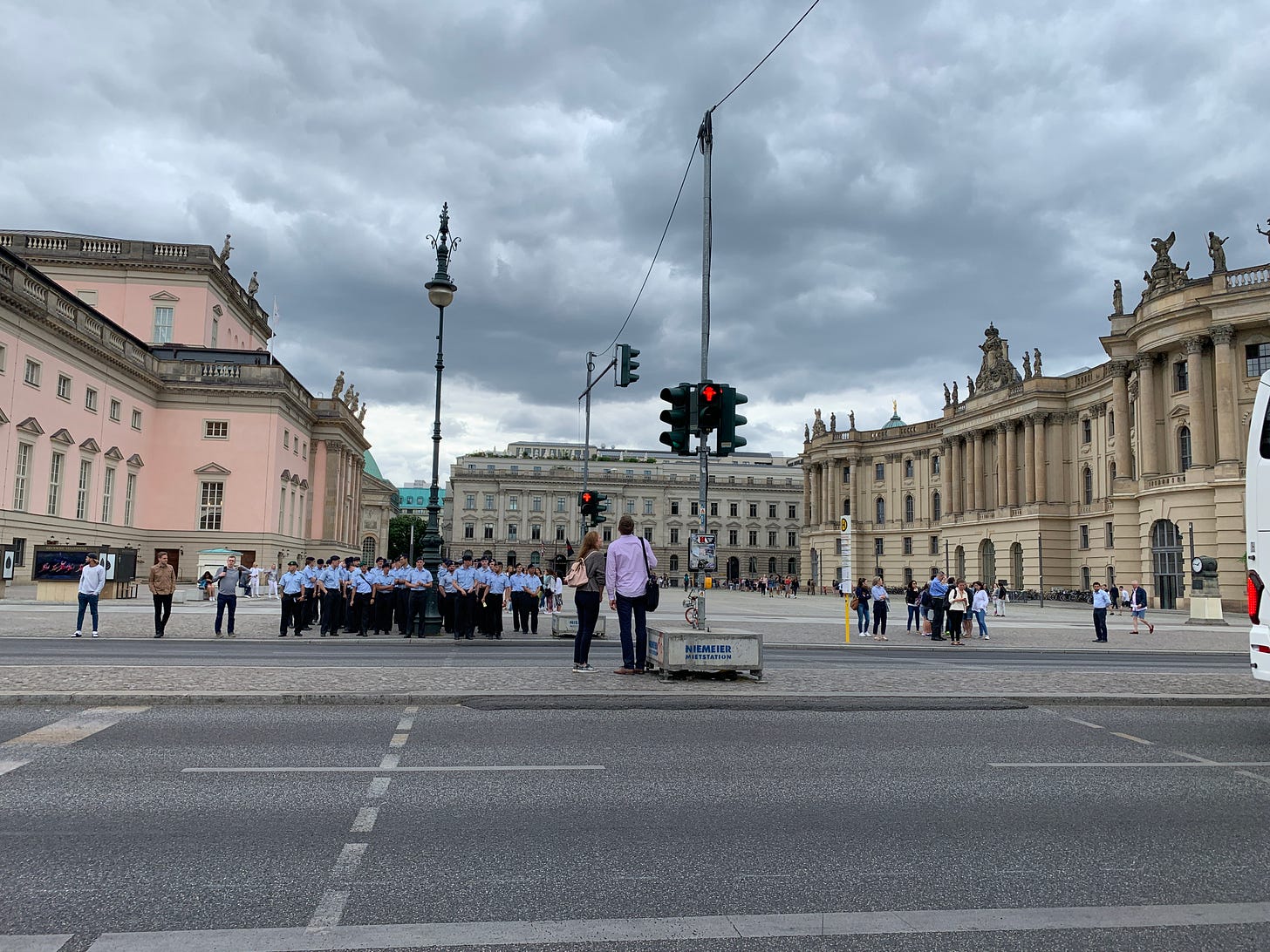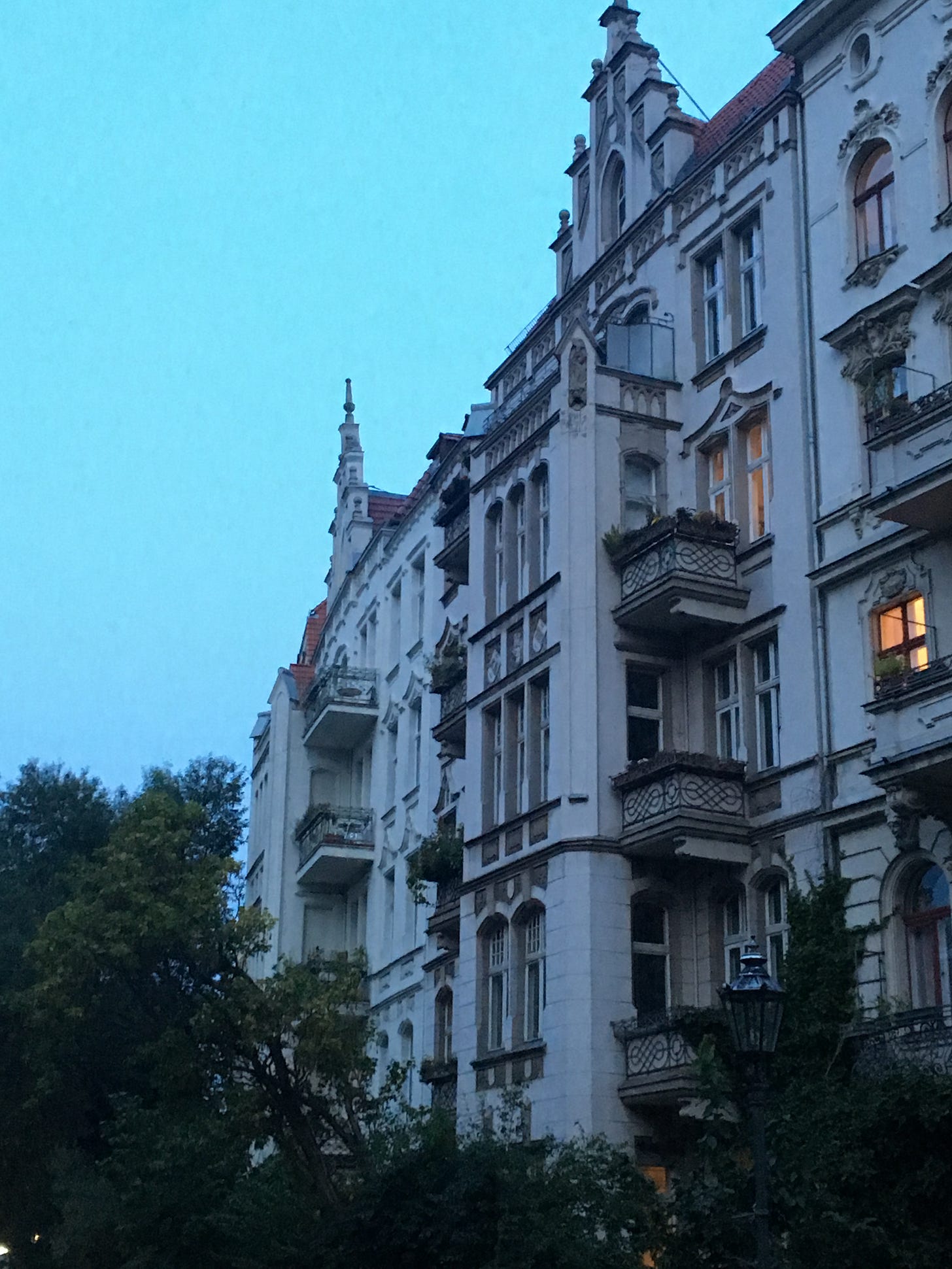Where the Stones Remember
Reflecting on A Personal Journey Through Germany’s Memorials, Resistance, and the Lessons We Still Need
In recent years, I’ve noticed more people drawing comparisons between our present moment and Germany in the 1930s. Some say, “Now we know what it was like when Hitler rose to power.” For much of my life, references like these felt like exaggerations—invoking the Nazis to describe a strict teacher or calling someone a “homework Nazi” in jest.
Even as a young person, I flinched at that kind of language. It felt wrong, even if I did not have the words to explain why. And then, I moved to Germany.
What had once felt like abstract history became personal, physical, and impossible to ignore. Living in Germany taught me something I hadn’t known I needed to learn: how a country holds its memory—and how it doesn’t.
I lived in Germany in my twenties, and later married a German partner in the U.S. Though our marriage ended, our children carry both U.S. and German citizenship. Living in Germany (and visiting it regularly for years after) meant I had the opportunity to understand the impact of WWII. I visited sites where atrocities occurred in Germany and Poland, witnessed the building of national monuments to honor victims, and walked past corners where cobblestones held small brass plaques placed in front of victims’ last known residences--personal, decentralized memorials to individuals murdered by the Nazis. It was undeniable that something atrocious had occurred. As an American, this challenged my unconscious perceptions. At the time, I had not yet seen comparable public memorials in my own country dedicated to those murdered by slavery. I was awed by the presence of collective memory in Berlin, a city that asked everyone not to forget.
And then there was the resistance movement. I had not really learned about the German resistance in school. I knew there was a group called the Red Orchestra, but it was a small blurb in my high school textbook's World War II section. Living in Berlin, where the presence of WWII was so prominent in the memorials, art, and theater, I was shocked by how little I had previously understood.
The German resistance during WWII was a diverse and courageous network of individuals and groups who opposed Adolf Hitler's regime from within Germany, often at great personal risk. In Berlin, the heart of the Nazi government, resistance ranged from clandestine political opposition to espionage, sabotage, and efforts to save Jews and other persecuted people. Key groups included the Red Orchestra, an anti-fascist network of intellectuals and Soviet sympathizers; the White Rose, a student-led group that distributed anti-Nazi leaflets; and military conspirators like Claus von Stauffenberg, who led the failed July 20, 1944 plot to assassinate Hitler. Churches, labor unions, and even isolated civilians also engaged in acts of defiance. Though fragmented and often uncoordinated, the resistance demonstrated moral courage and a refusal to be complicit, offering powerful counter-narratives to the idea of a uniformly supportive German populace. Many were arrested, tortured, or executed, but their actions remain a testament to the power of conscience in the face of tyranny.
Among the individuals in the resistance was Mildred Harnack, an American literary scholar who became deeply involved in underground efforts to oppose the Nazi regime. As an American in Germany myself, partnered with a German, her story struck me deeply. Born in Wisconsin, Mildred moved to Germany in the 1920s, where she married German economist Arvid Harnack. As Hitler rose to power, the couple became central members of the Red Orchestra, the resistance network of intellectuals, artists, and government workers who secretly distributed anti-Nazi literature, assisted Jews, and passed intelligence to the Allies. Despite efforts to remain hidden, the group was discovered in 1942. Arvid was executed, and Mildred—initially sentenced to prison—was retried on Hitler’s orders and executed by guillotine in 1943, the only American woman known to be executed on his direct command. Her story, not very well known as far as I know, struck me deeply. There was something profound about discovering this story as I was living and working and taking daily walks right where she had lived out her small role in resistance.
I was a twenty-something woman in Germany. My capacity to hold the complexity of social change—even when it leads to destruction—was deeply expanded by living there. My Sunday outings to my partner's grandmother’s house for cake and coffee were part of this. Oma A would talk about her life during Hitler’s rise with a kind of selective memory. A friend at the department store had suddenly disappeared, and yet her story ended there, without questions or follow-up. She wasn’t a villain in the traditional sense, but her refusal to look closer, to ask, to name, was part of the system that allowed atrocities to unfold. She had been young once, trying to live her life as best she could. But that life, like so many others, existed inside a regime that relied on people not noticing, not asking, not resisting.
At the end of the war, the Soviet Red Army entered Berlin in April 1945 as part of the final major offensive of the European theater of WWII. The Battle of Berlin began on April 16 and involved intense urban fighting between Soviet forces and the remnants of the German military and SS units. After encircling the city, Soviet troops pushed toward the center. The battle officially ended with Germany’s unconditional surrender of Berlin on May 2, 1945, and Germany as a whole surrendered on May 8, now known as V-E Day (Victory in Europe Day). Local people in and around Berlin tried to hide their possessions to avoid pillaging. When I was married, I would use the silverware her family had buried then for my Christmas dinner in Philadelphia PA.
The Soviet occupation marked both the end of Nazi rule and the beginning of a new chapter—eventually dividing Berlin into sectors and making the city a focal point of Cold War tensions. Living in Germany gave me an intimate view of that legacy too.
I am writing about this now because it still matters. These atrocities happened—millions of people died, and millions more lived through unfathomable fear and loss. But Germany, in the decades since, has done the work of remembering. The nation documented what happened, built spaces to mourn and reflect, and wove collective memory into its public consciousness. I had the privilege to bear witness to that.
And there was resistance. It wasn’t always well-coordinated or widespread, but it was there. People like Mildred Harnack, the Scholl siblings, and countless unnamed others risked their lives to say "no." That we don’t widely learn about them in school in the U.S. can leave us with the false impression that WWII happened because no Germans cared. But many did care. And like us now, they were trying to live ordinary lives in extraordinary times. Some couldn’t imagine how far things would go; others tried to stop it.
I do not want to romanticize or oversimplify. Many people did support the Nazis and were complicit in their rise. And many others, like Oma A, made quieter choices—burying what they didn’t want to see, just as her family once buried the silverware in their yard when the Russians were approaching Berlin. Some things were hidden out of fear. Some were hidden out of shame. Some remain buried still.
Now, I ask myself: What is my role in this time? Which part of history will I become? The monuments and resistance stories I encountered in Germany have stayed with me, not as distant echoes, but as reminders. Memory, truth, and action are choices. And history isn’t just something we study: it’s something we live.
An Incomplete list of books about the German Resistance
Resisting Hitler: Mildred Harnack and the Red Orchestra, Shareen Blair Brysac
Tells the story of Mildred Harnack, an American academic turned anti-Nazi operative, who became central to the Red Orchestra resistance network smuggling intelligence to the Allies and inspiring political dissent within Berlin before being captured and executed.
The Red Orchestra, Anne Nelson
Offers a broader view of the Red Orchestra network, weaving together the personal stories, espionage efforts, and choices of its members in their fight against Hitler from within Nazi Germany.
Germans Against Hitler: The Stauffenberg Plot and Resistance Under the Third Reich, Hans Mommsen
A more scholarly analysis of resistance movements within Nazi Germany, focusing on Claus von Stauffenberg and the July 20 plot, while exploring the ideological complexity and inner conflicts of those who worked to stop Hitler.
A Noble Treason: The Story of Sophie Scholl and the White Rose Revolt, Richard Hanser
Chronicles the short but powerful lives of Sophie Scholl and her fellow students in the White Rose, a nonviolent resistance group who distributed anti-Nazi leaflets and were executed for their bravery.
The White Rose, Inge Scholl
Written by the sister of Hans and Sophie Scholl, this personal account captures the spirit, motivations, and tragic fate of the White Rose resistance group..
At the Heart of the White Rose: Letters and Diaries of Hans and Sophie Scholl, Edited by Inge Jens
A collection of writings that explores the inner lives, convictions, and morals of the Scholl siblings as they moved toward active resistance against the Nazi regime.
Conscience in Revolt: Sixty-four Stories of Resistance in Germany 1933–45, Annedore Leber
Profiles 64 individuals, from clergy to military officers, who resisted Hitler’s regime in various ways, often paying with their lives.
They Thought They Were Free: The Germans, 1933–45, Milton Mayer
Although not focused only on resistance, this book examines how ordinary Germans adapted to life under the Nazis, while offering glimpses into those few who worked to think differently amid a culture of fear and conformity.






